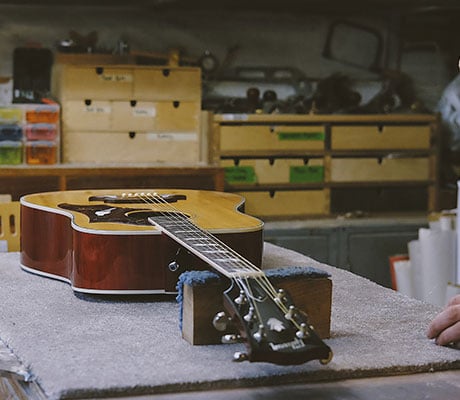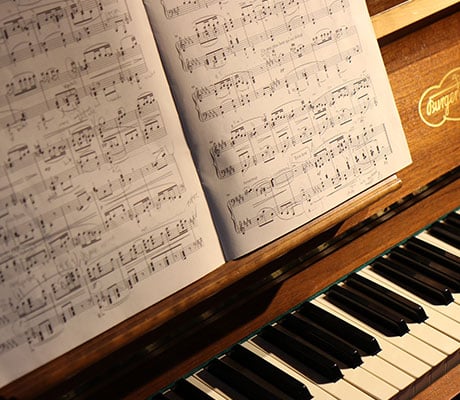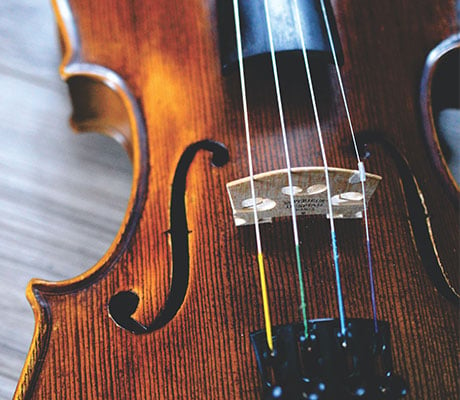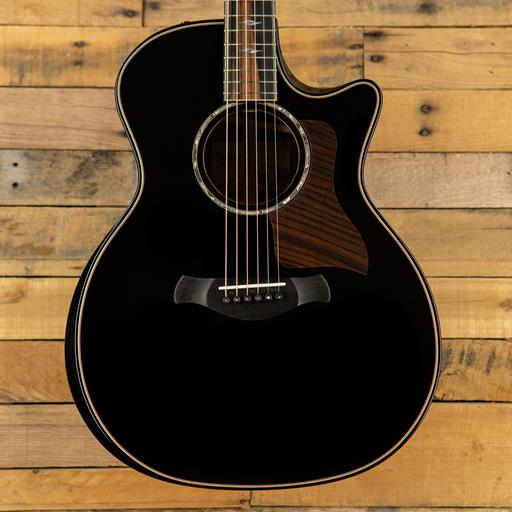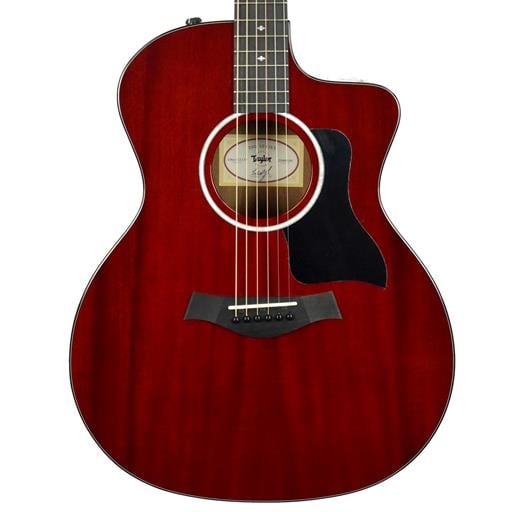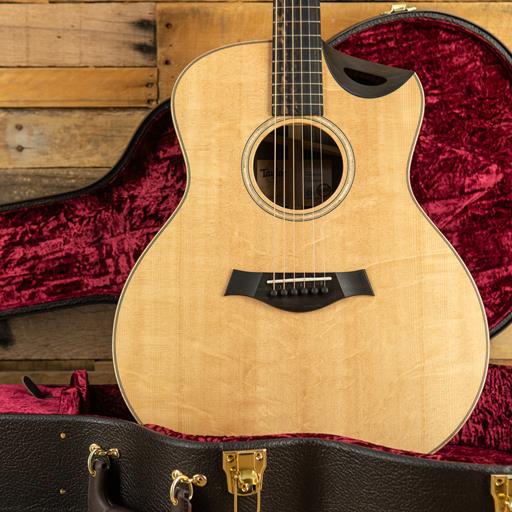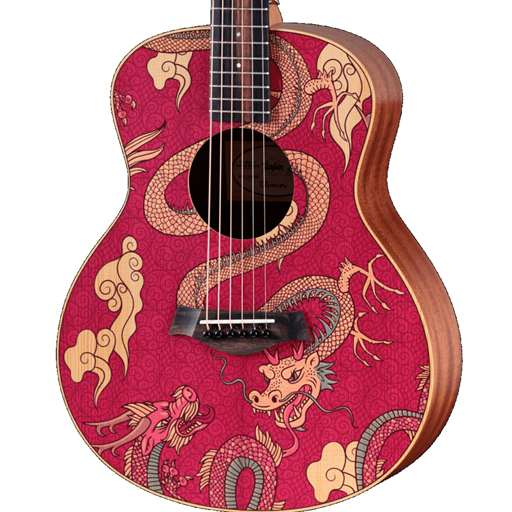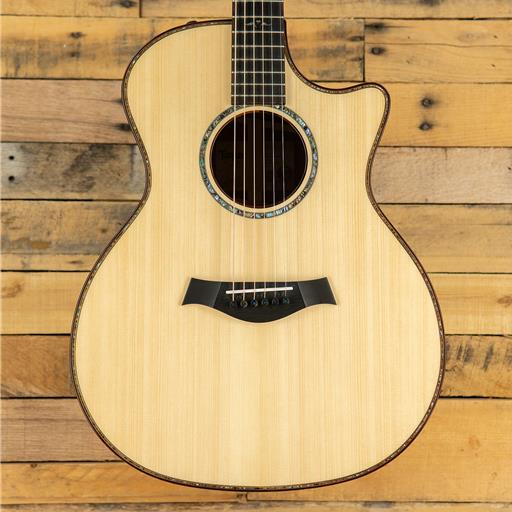Your shopping cart is now empty.
Featured Guitars

We are the #1 Taylor Guitar dealer in Missouri
& a Top 20 Taylor Guitar dealer in the US
News!
Effective Warm Up Tips for Beginning Musicians
All accomplished athletes devote the beginning of each training session to warming up, and musicians should follow their lead. Just like athletes, musicians need to prepare their bodies and minds for the demands of practice.
Why Warming Up Is Important
Warming up is crucial because it readies you physically and mentally for playing music. Although playing music might not seem as physically demanding as sports, it is surprisingly physical and can lead to injuries without proper preparation. For instance, violinists can strain their neck and shoulder muscles, while brass players risk damaging their lips, causing painful swelling and fatigue. These injuries can make playing difficult or even impossible. Musicians who warm up find their bodies more relaxed, responsive, and ready to play.
Warm-ups serve various purposes. They prepare our bodies for performing by enhancing breathing and air movement, limbering up fingers and hands, and engaging the fine muscles of the embouchure for wind players. Equally important, warm-ups engage our brains in listening and making musical sounds, contributing to the development of overall musicianship skills.
Mentally, warming up helps you focus on learning new music. Without a warmup, many musicians struggle to concentrate, leading to unproductive practice sessions. Warming up sharpens your focus, making practice more productive and less frustrating.
How To Warm Up Effectively
Student musicians need to be trained in proper individual warm-up techniques, completed before the group warms up as an ensemble. Basic individual warm-ups usually include the following elements:
Stretch: Use your body a lot while playing, so stretch the parts most used in your playing. Violinists, for instance, should ensure their necks, shoulders, and arms are loose and limber. Percussionists should stretch their fingers, wrists, arms, neck, and shoulders. Stretching helps prevent tension that can inhibit playing.
Start Easy, Then Increase Difficulty: Begin your warmup slowly and gradually increase the difficulty. Start with something comfortable and then progress to more challenging exercises. For wind players, this includes long tones at medium to soft dynamic levels, mouthpiece buzzing, and simple lip slurs. Articulation variations, including slurring and tonguing patterns, are also essential.
Deep Breathing Exercises: All musicians, including percussionists, should incorporate deep breathing exercises. These help with relaxation and prepare the respiratory system for the demands of playing.
Be Intentional: Avoid going through the motions. Take your warmup seriously and use it to focus on playing. This will enhance the productivity of your practice sessions and improve the quality of your playing.
Incorporating these elements into your warmup routine will help ensure you’re physically and mentally prepared for practice. Stretch well, start easy, engage in deep breathing, and be intentional to make the most of your warmup.
The Anatomy of a French Horn
The French horn, with its majestic sound and captivating presence, is a cornerstone of orchestral and brass ensemble music. Let's embark on a voyage through the inner workings of this remarkable instrument, unraveling its intricate anatomy and exploring the features that make it truly unique.
Mouthpiece:
Like all brass instruments, the journey of sound begins with the mouthpiece. It's the player's interface with the instrument, where air is blown to create vibrations. The shape and size of the mouthpiece can greatly influence the tone and timbre of the instrument, allowing for a personalized sound.
Lead Pipe:
The lead pipe serves as the conduit for the airflow from the mouthpiece into the main tubing of the French horn. Its design influences the instrument's response and resonance, contributing to the player's control and articulation. A well-crafted lead pipe can enhance the instrument's tonal characteristics and playability.
Key Levers:
French horns are equipped with key levers, also known as valve levers or valve paddles, which are used to engage the instrument's rotors. These levers are pressed by the player's fingers to redirect the airflow through different lengths of tubing, producing different pitches. The placement and ergonomics of the key levers are carefully designed to facilitate smooth, efficient valve operation.
Rotors:
At the heart of the French horn's sound production are its rotors, which are responsible for changing the pitch of the notes. There are two types of rotor mechanisms: string linkages and mechanical linkages. String linkages use strings or cables to connect the key levers to the rotors, while mechanical linkages use gears or levers. Each system has its own unique feel and response, with some players preferring the smoothness of string linkages and others favoring the precision of mechanical linkages.
Tuning Slide:
The tuning slide allows players to make fine adjustments to the pitch of the instrument. By extending or retracting the tuning slide, players can ensure that the French horn is perfectly in tune with other instruments in the ensemble. It's a small but crucial component that contributes to the instrument's overall intonation and blend.
Bell:
The bell of the French horn is where the sound is projected outward, giving the instrument its characteristic warmth and resonance. Its flared shape enhances the instrument's tonal projection, allowing for rich, expressive tones that can fill even the largest concert halls.
The Difference Between Single Horn and Double Horn:
One notable distinction in French horn anatomy is between single horns and double horns. Single horns have a simpler design, with only one set of tubing and one set of key levers. Double horns, on the other hand, have an additional set of tubing and key levers, activated by a thumb lever near the player's hand. This allows for greater flexibility in pitch and tonal color, making double horns a preferred choice for many professional players.
Understanding the anatomy of the French horn offers a glimpse into the craftsmanship and engineering behind this beloved instrument. From the mouthpiece to the bell, each component plays a vital role in shaping its distinctive sound and expressive capabilities, making it an essential voice in any musical ensemble.
Anatomy of the Baritone/Euphonium
Baritones and euphoniums are brass instruments known for their warm, mellow tones and versatile musical capabilities. Let's dive into the inner workings of these instruments, uncovering the various components that contribute to their distinct sound and character.
Mouthpiece:
Just like with other brass instruments, the mouthpiece is where the sound begins. It's a small, cup-shaped attachment that players blow into to produce vibrations. The shape and size of the mouthpiece can affect the instrument's tone and playability, giving each player their own unique sound.
Leadpipe:
The leadpipe is like the gateway for air to enter the instrument. It connects the mouthpiece to the main tubing and helps direct the airflow into the instrument's body. A well-designed leadpipe can improve the instrument's response and playability, allowing for smooth, effortless playing.
Valves & Valve Casing:
Unlike trombones, baritones and euphoniums use valves to change the pitch of the notes. When a player presses down on a valve, it redirects the airflow through different lengths of tubing, producing different notes. The valves are housed in valve casings, which keep them in place and allow them to move freely when pressed.
Valve Slides:
Similar to the slides on a trombone, baritones and euphoniums also have valve slides that can be adjusted to fine-tune the instrument's intonation. These slides extend and retract to ensure that each note is in tune with the rest of the ensemble. Keeping these slides well lubricated is essential for smooth, precise playing.
Water Key:
During play, moisture can build up inside the tubing of the instrument. To prevent this from affecting the sound quality, baritones and euphoniums are equipped with a water key, also known as a spit valve. This small mechanism allows players to release excess moisture, ensuring clear, resonant tones.
Bell:
At the end of the instrument, you'll find the bell, which is where the sound is projected outward. The shape and size of the bell can influence the instrument's tone and projection, with larger bells typically producing a richer, more resonant sound. It's like the speaker of the instrument, amplifying the vibrations created by the player.
The Difference Between Baritones and Euphoniums:
While baritones and euphoniums may look similar, there are some key differences between the two. Euphoniums typically have a larger bore size and a more conical shape, giving them a darker, more mellow sound.
Understanding the anatomy of baritones and euphoniums gives us a deeper appreciation for these versatile brass instruments. From the mouthpiece to the bell, each component plays a vital role in shaping their unique sound and expressive capabilities, making them essential members of any ensemble.
The Anatomy of a Trombone
The trombone, with its distinctive sliding mechanism and bold, resonant sound, holds a prominent place in both classical and contemporary music. Behind its polished brass exterior lies a meticulously crafted ensemble of components, each playing a crucial role in shaping the instrument's sound and playability. Let's take a closer look at the anatomy of a trombone, dissecting its key components and exploring their functions.
Mouthpiece:
At the forefront of every trombone's sound production is the mouthpiece, a small yet vital component that serves as the interface between player and instrument. Crafted to fit comfortably against the player's lips, the mouthpiece channels the airstream into the trombone's tubing, initiating vibrations that resonate throughout the instrument.
Slide:
Central to the trombone's unique sound and versatility is its sliding mechanism, which sets it apart from other brass instruments. The slide consists of two parallel tubes, one nested inside the other, allowing the player to extend or retract the length of the tubing. By moving the slide in and out, the player can produce a seamless glissando effect, smoothly transitioning between pitches with remarkable fluidity.
Bell:
Situated at the opposite end of the instrument from the mouthpiece, the bell of the trombone serves as the primary outlet for sound projection. Its flared shape enhances resonance and amplifies the instrument's bold, brass timbre, ensuring that the trombone's voice carries across even the largest of performance spaces.
Water Key:
During play, moisture can accumulate inside the trombone's tubing, potentially affecting sound quality and playability. To address this issue, trombones are equipped with a water key, also known as a spit valve. Located at the lowest point of the instrument's tubing, typically near the bell section, the water key provides a convenient means for players to expel excess moisture, ensuring optimal performance.
Braces:
Trombones feature several braces strategically placed along the instrument's body to provide structural support and stability. These braces help distribute the instrument's weight evenly, minimizing strain on critical joints and connections. Additionally, braces contribute to the trombone's overall durability, ensuring that it can withstand the rigors of frequent use and transportation.
Tuning Slide:
To accommodate variations in pitch and intonation, trombones are equipped with a tuning slide, usually located near the mouthpiece receiver. By adjusting the position of the tuning slide, players can fine-tune the instrument to match the desired pitch reference, ensuring compatibility with other musicians or ensembles. The tuning slide also allows for quick adjustments during performance, enabling seamless transitions between different keys and musical passages.
In conclusion, the trombone's anatomy reflects a harmonious blend of form and function, where precision engineering meets artistic expression. From the mouthpiece to the bell, each component plays a vital role in shaping the instrument's sound and playability, inviting players and audiences alike to revel in the trombone's rich, resonant tones and dynamic versatility.
The Anatomy of an Orchestral String Instrument
Orchestral string instruments like the violin, viola, cello, and double bass have a fascinating anatomy that contributes to their beautiful sound. Let's explore the different parts of these instruments and how they work together to create music!
Scroll and Pegbox:
At the top of the instrument is the scroll, which is like a decorative flourish that adds personality to the instrument. Below that is the pegbox, where you'll find the tuning pegs. These pegs are turned by the player to tighten or loosen the strings, helping to tune the instrument just right.
Neck and Fingerboard:
The neck of the instrument connects the pegbox to the body. It's like the bridge between the head and the rest of the instrument. On top of the neck is the fingerboard, a smooth surface where the player presses down on the strings to change the notes they're playing.
Nut:
The nut is a small, often overlooked part located at the top of the fingerboard, near the pegbox. It's a little strip of material, usually made of bone or plastic, that helps keep the strings evenly spaced and at the right height above the fingerboard. It plays a crucial role in ensuring that the strings vibrate freely and produce clear, accurate notes.
Strings:
The strings are the heart of these instruments. They're stretched tightly across the body and are responsible for creating the sound when they're plucked, bowed, or strummed. Each string is made from different materials, giving the instrument its own unique voice.
Body and Sound Holes:
The body of the instrument is like its acoustic chamber, designed to amplify and project the sound produced by the strings. If you look closely, you'll see small holes on the body called sound holes or f-holes. These holes allow the sound to escape, enhancing the instrument's resonance and projection.
Bridge and Tailpiece:
The bridge is a small, curved piece of wood that sits under the strings, holding them up and transmitting their vibrations to the body of the instrument. It's like a tiny stage for the strings to perform on! Below the bridge is the tailpiece, which anchors the strings and helps maintain their tension.
Endpin (Cello and Double Bass):
For larger instruments like the cello and double bass, there's an endpin that extends from the bottom of the instrument. It acts as a support, allowing the player to hold the instrument upright while playing.
Bows:
Finally, we have the bow, which is used to create sound by moving it across the strings. The bow is made of a stick with horsehair stretched across it. By applying pressure and moving the bow at different speeds and angles, the player can produce a wide range of tones and dynamics.
Understanding the anatomy of orchestral string instruments gives us a deeper appreciation for the craftsmanship and engineering behind these beautiful instruments. Each part plays a vital role in producing the rich, expressive sound that has captivated audiences for centuries.
The Anatomy of a Trumpet
The trumpet, a herald of melodies and a staple in various musical genres, boasts a design that blends elegance with functionality. Its gleaming brass body has captivated audiences for centuries, but what lies beneath the surface of this iconic instrument? Let's embark on a journey through the anatomy of a trumpet, uncovering its key components one by one.
Mouthpiece & Mouthpiece Receiver:
At the forefront of every trumpet's sound production is the mouthpiece. Crafted to fit comfortably against the player's lips, the mouthpiece channels the airstream into the instrument. Connected to the main body via the mouthpiece receiver, this crucial component determines much of the trumpet's tonal characteristics.
Lead Pipe:
The lead pipe serves as the initial conduit for the airflow, guiding it from the mouthpiece into the main tubing of the trumpet. Its design influences the instrument's response and resistance, contributing to the player's control and articulation.
Valves:
Positioned at the heart of the trumpet are the valves, typically three in number. These piston-like mechanisms, when depressed by the player's fingers, alter the length of the tubing, thereby producing different notes in combination with the instrument's natural harmonic series.
Valve Slides:
Valve slides, often made of metal, extend and retract to fine-tune the intonation of specific notes. By adjusting these slides, players can ensure that each pitch aligns perfectly within the desired musical context.
Valve Casings:
Housed within the trumpet's body, the valve casings provide a secure enclosure for the valves while allowing them to move freely when engaged. Precision engineering ensures smooth operation, minimizing friction and maximizing performance.
Water Key:
As moisture accumulates inside the tubing during play, the water key, also known as the spit valve, offers a convenient means of drainage. Located at the lowest point of the instrument, this small mechanism helps maintain the trumpet's clarity of tone and responsiveness.
Main Tuning Slide:
The main tuning slide enables overall pitch adjustment by altering the length of the trumpet's tubing. Players use this slide to calibrate the instrument to the desired pitch reference, ensuring compatibility with other musicians or ensembles.
Bell:
Last but certainly not least, the bell serves as the trumpet's voice, projecting its vibrant timbre into the surrounding space. Its flared shape enhances resonance and amplifies sound, allowing the instrument to cut through even the most dynamic musical settings.
The trumpet's allure extends beyond its polished exterior, encompassing a meticulously crafted ensemble of components that work in harmony to produce its unmistakable sound. Each element plays a vital role in shaping the instrument's tonal palette and responsiveness, inviting players and listeners alike to marvel at the beauty of its design and the depth of its musical expression.
From Pianos to Power Chords: A Look Back at Ernie Williamson Music's 89 Years of Harmony
The year is 1935. The Great Depression lingers, but in Pittsburg, Kansas, a different kind of melody takes root. That's when Ernie Williamson, fueled by a passion for music, opens his doors, offering musical instruments and supplies to a community thirsting for harmony. Nearly nine decades later, Ernie Williamson Music isn't just a store; we're a local legend, a cornerstone of the Ozarks' vibrant music scene.As Ernie Williamson Music embarks on its 90th year, the future looks bright. We're well-positioned to adapt and thrive in the ever-evolving music industry, our core values remaining their guiding melody. From humble beginnings to national recognition, our story is a testament to the power of passion, dedication, and the enduring love for music. So, the next time you strum a guitar, pick up a trumpet, or lose yourself in a piano sonata, remember the legacy of Ernie Williamson Music, a local legend that continues to orchestrate harmony in the Ozarks.


